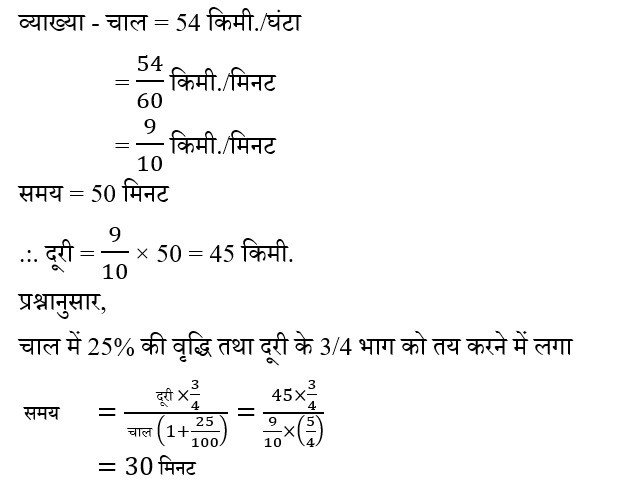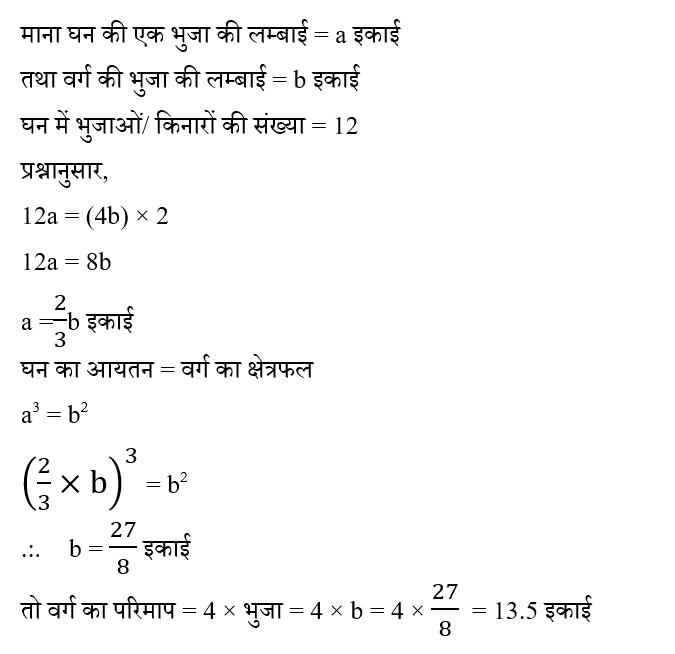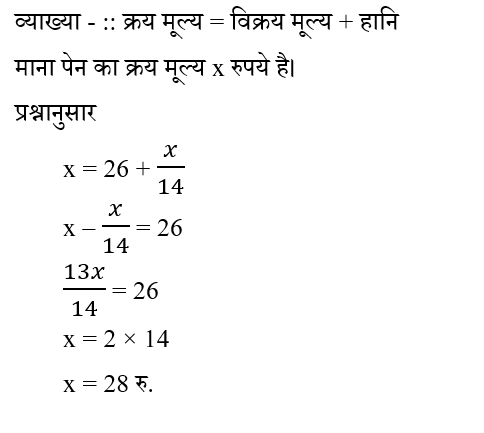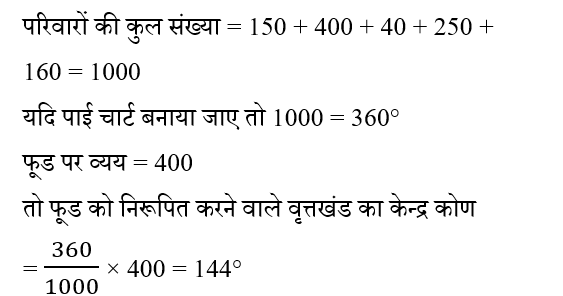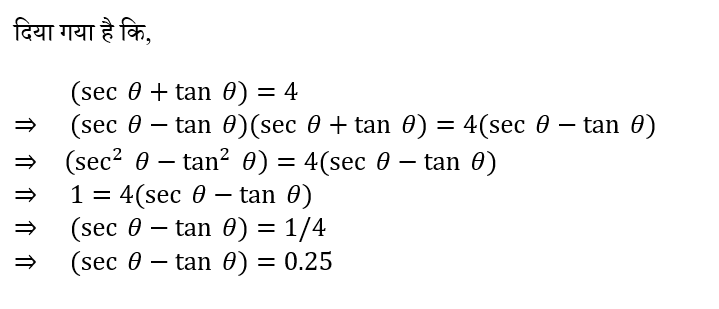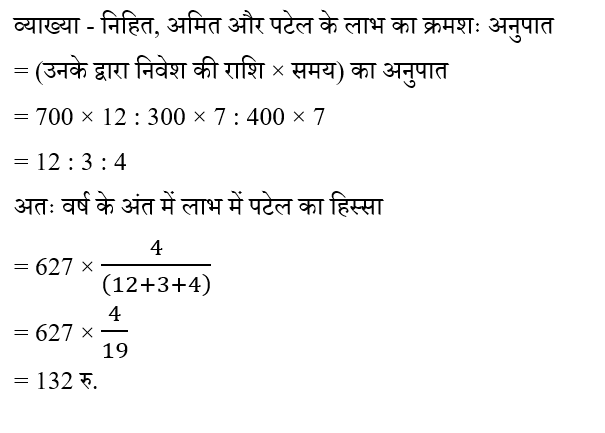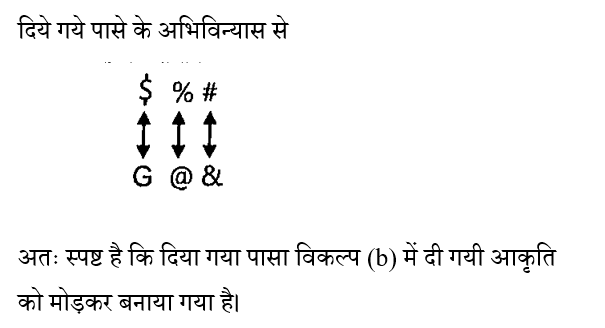Question 1:
A car travelling at a speed of 54 km/hr covers a certain distance in 50 minutes. If the speed is increased by 25%, then in how much time will the car cover 3/4 of the distance?
कोई कार, 54 किमी / घंटा की चाल से किसी निश्चित दूरी को 50 मिनट में तय करती है। यदि चाल में 25% की वृद्धि होती है, तो कार उस दूरी के 3/4 भाग को कितने समय में तय करेगी?
Question 2:
The sum of the lengths of the edges of a cube is equal to twice the perimeter of a square. If the numerical value of the volume of the cube is equal to the numerical value of the area of the square, then the perimeter of the square will be:
एक घन के किनारों की लंबाई का योग एक वर्ग के परिमाप के दोगुने के बराबर है। यदि घन के आयतन का संख्यात्मक मान वर्ग के क्षेत्रफल के संख्यात्मक मान के बराबर हो, तो वर्ग का परिमाप कितना होगा:
Question 3:
By selling a pen for Rs 26, a person incurs a loss equal to one-fourteenth (1/14th) of the purchase price of the pen. Find the purchase price of the pen.
एक पेन को 26 रु. में बेचने पर, एक व्यक्ति को पेन के क्रय मूल्य के एक- चौदहवें (1/14वें) भाग के बराबर हानि होती है। पेन का क्रय मूल्य ज्ञात कीजिए ।
Question 4: 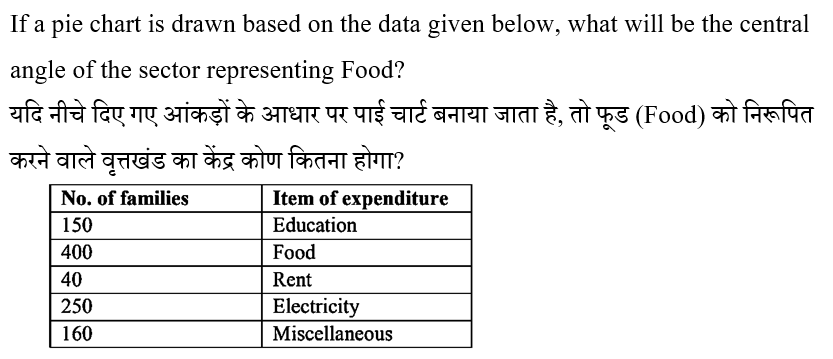
Question 5: 
Question 6:
A person can cover a distance of 78 km downstream and 42 km upstream by boat in 6 hours. The speed of the stream is 6 km/hr. In how much time can he cover a distance of 100 km in still water by boat?
कोई व्यक्ति, धारा की दिशा में 78 किमी. और धारा की विपरीत दिशा में 42 किमी. की दूरी नाव द्वारा 6 घंटे में तय कर सकता है। धारा की चाल 6 किमी./घंटा है। नाव द्वारा कितने समय में वह शांत जल में 100 किमी. की दूरी तय कर सकता है ?
Question 7:
Nihit starts a business with Rs 700. After 5 months Amit and Patel join him with Rs 300 and Rs 400 respectively. At the end of the year, the business earned a profit of Rs 627. Find Patel's share in the profit.
निहित 700 रु. से एक व्यवसाय शुरू करता है। 5 महीने के बाद अमित और पटेल क्रमश: 300 रु. और 400 रु. के साथ उसके साथ शामिल हो जाते हैं। वर्ष के अंत में, व्यवसाय से 627 रु. का लाभ प्राप्त हुआ। लाभ में पटेल का हिस्सा ज्ञात कीजिए ।
Question 8:
Three statements are given followed by two conclusions I and II. Assuming the statements to be true, even if they seem to be at variance with commonly known facts, decide which of the conclusions logically follows from the statements.
तीन कथन दिए गए हैं और दो निष्कर्ष I और II दिए गए हैं। कथनों को सत्य मानते हुए, चाहे वे सामान्यतः ज्ञात तथ्यों से अलग प्रतीत होते हों, निश्चय कीजिए कि कौन-सा निष्कर्ष तार्किक रूप से कथनों के अनुसार है।
Statements : / कथन :
कुछ फल, खरगोश हैं। / Some fruits are rabbits.
कोई खरगोश, लोमड़ी नहीं है। / No rabbit is a fox.
सभी लोमड़ियाँ, गाय हैं। / All foxes are cows.
Conclusions : / निष्कर्ष :
I. कुछ गाय, फल हैं। / Some cows are fruits.
II. कुछ फल, लोमड़ियाँ हैं। / Some fruits are foxes.
Question 9:
Two orientations of a dice are shown. Which alternative shape can be obtained by folding this dice along the lines?
एक पासे के दो अभिविन्यास दिखाए गए हैं। यह पासा किस विकल्प अकृति को रेखाओं के अनुदिश मोड़कर प्राप्त किया जा सकता है?

Question 10:
Select the option in which the given figure is embedded. (Rotation is not allowed)
उस विकल्प का चयन करें जिसमें दी गई आकृति अंतर्निहित है । (घुमाने की अनुमति नहीं है)


